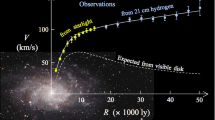Abstract
We develop an automatic, computer controlled procedure to select and to analyze the Network Bright Points (NBPs) on solar images. These have been obtained at the Sac Peak Vacuum Tower Telescope by means of the Universal Birefringent Filter and Zeiss Hα filters, tuned, respectively, along the profiles of the Hβ, Mg-b1, Na-D2, and Hα lines.
A structure is identified as an NBP if at the wavelength Hα- 1.5 A its maximum intensity is greater than 〈I〉 + 3σ and its area is greater than 1.5 arc sec2 at 〈I〉 + 1.5σ, where 〈I〉 is the mean value and σ the standard deviation of the intensity distribution on the image. Each detected NBP is then searched and confirmed in all the remaining 31 images at different wavelengths.
For each NBP several parameters are measured (position, area, mean and maximum contrast, Dopplergram velocity, compactness, and so on) and some identification constraints are applied.
The statistical analysis of the various parameter distributions, for NBPs present within an active region and its surroundings, shows that two types of NBPs can be identified according to the value of their mean contrast C min the Hα- 1.5 Å image (C m ≤ 0.1 → type I, C m> 0.1 → type II). The type I NBPs (all occurring on the boundaries of the supergranular network) appear to be much more frequent (180/26) than the type II ones.
The size 〈A〉 of type I NBPs is less than 1.0 arc sec for Hα/Hβ wings but of the order of 1.2 arc sec for Na-D2 and Mg-bl. The mean contrast C m is around the value of 10% along the Na-D2 and Mg-bl profiles and of 20% along the Hα/Hβ wings.
The C m - 〈A〉 scatter diagrams show, for the photospheric radiation (h < 100 km), a narrow range of variability for C min correspondence with a wide range for 〈A〉. For radiation orginated at higher levels (h > 200 km), the C m- 〈A〉 scatter diagrams seem to indicate, even if with a large variance, that the highest C m's tend to correspond to the highest 〈A〉 values.
The mean Doppler shift is close to zero for Na-D2 and Mg-bl lines but negative (downward motion) for Hα and Hβ lines.
The type II NBPs tends to be preferentially located in the neighbourhood of small, compact sunspots and their detectability is almost constant through all the 4 studied line profiles. No conclusions can be derived on the mean size, contrast and Doppler shift values because their distributions are too dispersed. The only positive information is that its C m- 〈A〉 scatter diagram, in Hα and Hβ wings, indicates a wide range of variability for C m in correspondence with very narrow range of variability for 〈A〉.
Similar content being viewed by others
References
Altrock, R. C. and Canfield, R. C.: 1974, Astrophys. J. 194, 733.
Beckers, J. M. and Schroeter, E. H.: 1968, Solar Phys. 25, 81.
Brault, J. and Testermann, L.: 1973, Preliminary Edition of the ‘Kitt Peak Solar Atlas’, Tucson.
Caccin, B., Falciani, R., Roberti, G., Sambuco, A. M., and Smaldone, L. A.: 1983, Solar Phys. 89, 323.
Caccin, B., Gomez, M. T., and Roberti, G.: 1980, Astron. Astrophys. 92, 63.
Falchi, A., Falciani, R., and Smaldone, L. A.: 1985, in R. Muller (ed.), ‘High Resolution in Solar Physics’, Proc. VIII IAU Eur. Reg. Astron. Meeting, Toulouse, Springer-Verlag, Berlin, p. 172.
Giovannelli, R.: 1974, Solar Phys. 37, 301.
Mattig, W.: 1985, in R. Muller (ed.), ‘High Resolution in Solar Physics’, Proc. VIII IAU Eur. Reg. Astron. Meeting, Toulouse, Springer-Verlag, Berlin, p. 141.
Mehltretter, J. P.: 1974, Solar Phys, 38, 43.
Muller, R.: 1983, Solar Phys. 85, 113.
Muller, R.: 1985, Solar Phys. 100, 237.
Muller, R. and Keil, S.: 1983, Solar Phys. 87, 243.
November, L. J., Toomre, J., Gebbie, K., and Simon, G.: 1981, Astrophys. J. 245, L123.
Osherovich, V. A., Fla, T., and Chapman, G. A.: 1983, Astrophys. J. 268, 412.
Schmidt, H. U. (ed.): 1985, Theoretical Problems in High Resolution Solar Physics, MPA/LPARL Workshop, München.
Spruit, H. C.: 1981, in S. Jordan and R.N. Thomas (eds.), ‘The Sun as a Star’, NASA Monograph Series on Nonthermal Phenomena in Stellar Atmospheres, NASA SP-450, p. 385.
Spruit, H. C. and Zwaan, C.: 1981, Solar Phys. 70, 207.
Stenflo, J. O. and Harvey, J. W.: 1985, Solar Phys. 95, 99.
Vernazza, J. E., Avrett, E. H., and Loeser, R.: 1973, Astrophys. J. 184, 605.
Vernazza, J. E., Avrett, E. H., and Loeser, R.: 1981, Astrophys. J. Suppl. Ser. 45, 635.
Wilson, P. R.: 1981, Solar Phys. 69, 9.
Zelenka, A.: 1975, Solar Phys. 40, 39.
Zwaan, C.: 1978, Solar Phys. 60, 213.
Zwaan, C.: 1981, in S. Jordan and R. N. Thomas (eds.), ‘The Sun as a Star’, NASA Monograph Series on Nonthermal Phenomena in Stellar Atmospheres, NASA SP-450, p. 163.
Author information
Authors and Affiliations
Rights and permissions
About this article
Cite this article
Falchi, A., Falciani, R., Smaldone, L.A. et al. Bidimensional spectroscopy of network bright points. Sol Phys 114, 29–45 (1988). https://doi.org/10.1007/BF00193065
Received:
Revised:
Issue Date:
DOI: https://doi.org/10.1007/BF00193065




